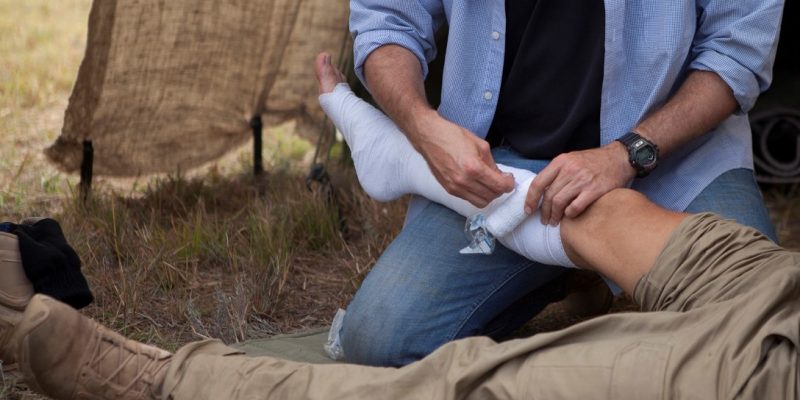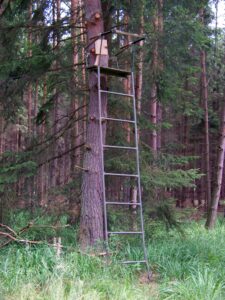In the following article, I will tell you exactly how to treat snake bites both in a safe environment (like your backyard), or in the wild.
Although poorly reported, conservative estimates put snake bites between 1.2 and 5.5 million incidents per year, resulting in around 20,000 deaths. More liberal estimates are as high as 94,000 per year.
If this happens to you or someone you know, there is no substitute for medical attention. The bottom line is that snake bites are a serious medical emergency, so you must contact emergency services immediately.
That said, you may find yourself in a less-than-ideal situation, perhaps unable to call for aid. You will find information here to help you through such a scenario.
I feel it is also vital (and fascinating) to understand how snake bites work. It may help you to remain calm or even save your life. I’ve therefore peppered the following article with helpful background information too.
Contact Emergency Services Immediately
Dial 911
Part 1:
- How does a snake bite work?
Snakes only bite in self-defense or to attack prey, and a human is not their prey.
Not all snake bites are venomous; in fact, most snake bites are not. Of 3,000 world snake species, only around 600 are venomous.
What’s more, venomous snakes voluntarily decide how much venom to inject into a bite, meaning that not all snake bites from venomous snakes result in poisoning. Such “dry bites” make up as much as 30-50% of poisonous snake bites.
Of course, amongst different species of snake, there are different types of venom.
Cytotoxins
- Swelling and tissue damage to the affected area.
Haemorrhagins
- disrupts blood vessels
- Anti-clotting agents don't allow the blood to clot
Myotoxins
- Breaks down muscles
Part 2:
- Are snake bites common?
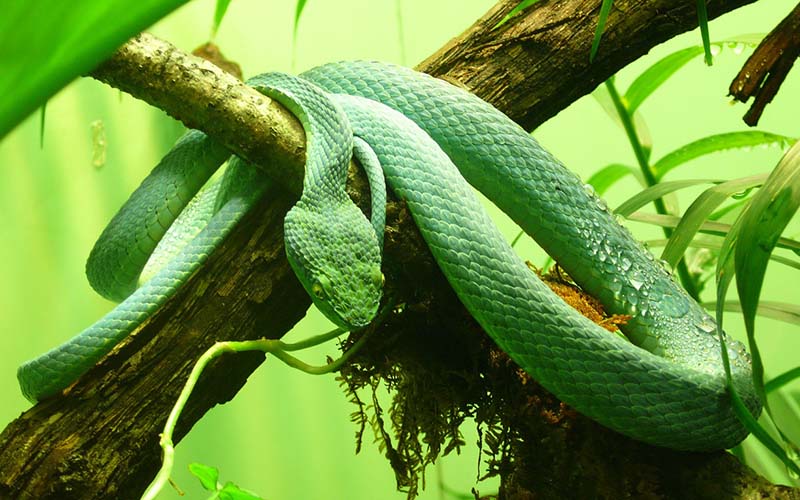
Snake bites are most common in agricultural and tropical regions, particularly in South Asia, South-East Asia, and Sub-Saharan Africa.
In North America, snakes bite some 45,000 times per year (of which 8,000 are poisonous), poisoning four in 100,000 people.
Surprisingly, only one in 65 million people die each year (roughly five deaths per year).
Part 3:
- How to identify venomous snakes
There are two main families of venomous snakes:
The Cobra Family
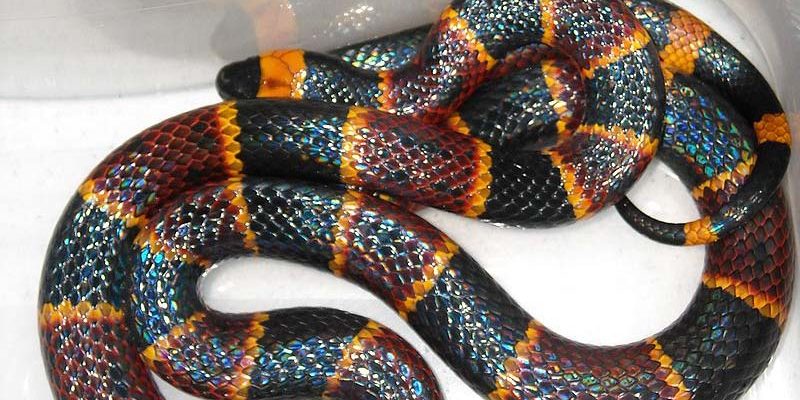
Kraits, mambas, and sea snakes are among the Cobra family, like this Coral Snake, native to Northern America
- Family name: Elapidae or Elapids
- Species: around 300 venomous species
- Fangs: they have short fangs in the upper jaw. They strike downward and then chew
- Venom: neurotoxic venom (paralysis and nervous system damage), although it can also harm body tissues and blood cells. Death from paralysis of the heart and lungs can occur if untreated.
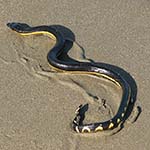
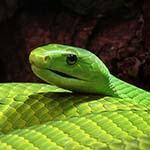
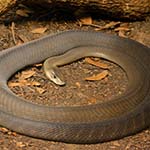
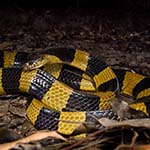
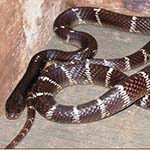
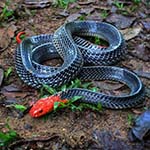
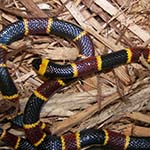
The Viper Family
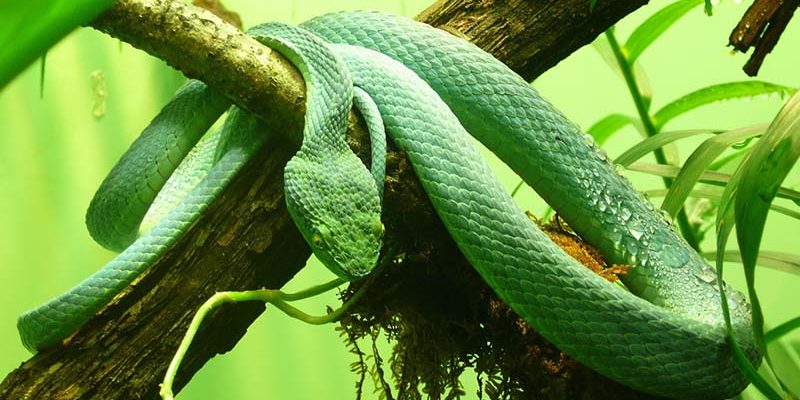
Vipers are by far the most common snake found in Northern America, although this Palm Viper can only be found in Central America and northern South America
- Family name: Vaperidae
- Species: more than 200 species of viper
- Fangs: they have long, hollow venomous fangs attached to movable bones in the upper jaw. The fangs fold back in the upper mouth when not in use.
- Characteristics: distinguishable for their wide, triangular heads and stocky bodies
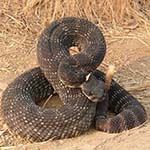
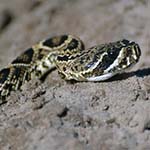
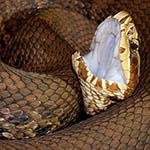
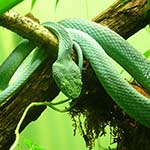
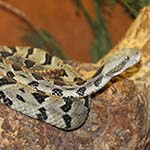
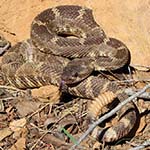
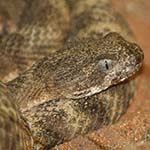
Part 4:
- What are the symptoms of venomous snake bites?
A non-venomous snake might only leave teeth marks. A poisonous snake leaves two puncture wounds at the sides of the bite where the venomous teeth have punctured flesh to inject the venom.
Symptoms vary from snake to snake. The majority of bites occur on the arms and legs. If non-venomous, you will likely feel pain and scratches around the bite.
If venomous, you might feel a sharp throbbing/burning sensation in as little as 15 to 30 minutes. The symptoms will likely soon progress to swelling and bruising around the bite area and along the extremity. That said, some venomous bites may not initially hurt.
A whole range of further symptoms are also possible:
- Redness, swelling or damaged tissue in the bitten area
- Low blood pressure
- Shock
- Nausea and vomiting
- Headaches
- Sweating
- Blurred vision
- Dizziness
- Weakness
- Increased production of saliva
- Thirst
- Diarrhea
- Numbness in face or limbs
- Convulsions
- Irregular blood clotting or bleeding due to effects of the venom
- Difficulty breathing (or at worst, not being able to breathe)
- Losing consciousness
Part 5:
- How to treat the snake bite
Important: take note of the snake’s appearance to identify it to emergency services later. If the bite is venomous, our main aim is to administer the correct anti-venom.
Information on the size, color, and particular type of snake could be essential to determining the right anti-venom to administer. If you can safely take a photo with your smartphone, this would be excellent for later identification.
If you can, call emergency services immediately.
First aid: protect the person
- Move them from further danger (out of striking distance)
- Lie the person down with the wound below the heart to slow the spreading of venom through their body
- Help the person to remain calm (to hold back the spread)
- Reduce movement (also to slow the spreading)
- Remove jewelry (watches, necklaces, bracelets, etc.) from the bite area. Jewelry puts unnecessary pressure on the skin when swelling occurs.
- Remove footwear if bitten on the lower leg or foot
If the bite is venomous
The person must receive anti-venom treatment, so seek medical assistance as soon as possible.
In the meantime, cover the bite wound with a loose sterile bandage to protect from dirt or further injury.
Do not give the person any non-steroidal anti-inflammatory drugs (NSAIDs) such as Ibuprofen, Naproxen, Advil, Motrin, or other, as they increase the risk of over-bleeding. It may be okay to give the person Acetaminophen, although it’s best to consult their doctor.
If the bite is Non-Venomous
If you are entirely sure the bite is non-venomous, then you should treat it as a puncture wound. Nonetheless, seek out medical assistance. A medical professional can help to prevent infection and to limit the severity of the injury.
Be particularly quick to seek medical attention if the person:
- is bleeding excessively
- is spurting blood
- is still bleeding after ten minutes of applied pressure to the bite
- is bitten on the chest, abdomen or neck
- is in severe pain, breathing fast, dizzy or unconscious
- has a tooth (or anything else) lodged inside the body (a medical expert will be required to remove it)
1. Stop the bleeding
First, stop the bleeding by applying direct pressure to the bite with sterile gauze or a clean cloth
2. Clean and protect the wound
Rinse under clean water for several minutes, washing the area with mild soap and water, and then rinse again. If available, apply an antibiotic cream
3. Treat the Pain
In the case of non-venomous bites, you may administer ibuprofen or acetaminophen. Always check with your consultant first, though.
Under no circumstances should you
- Cut into or across a bite wound
- Suck out the venom
- Apply a tourniquet
- Apply ice
- Apply or submerge in water
- Give the person alcohol, caffeine, or any other medication (it speeds up the spread of venom)
- Try to pick up, wrap up, attack, or goad the snake. You are likely to be bitten again.
Part 6:
- Medical follow up: why you should always seek professional medical care immediately
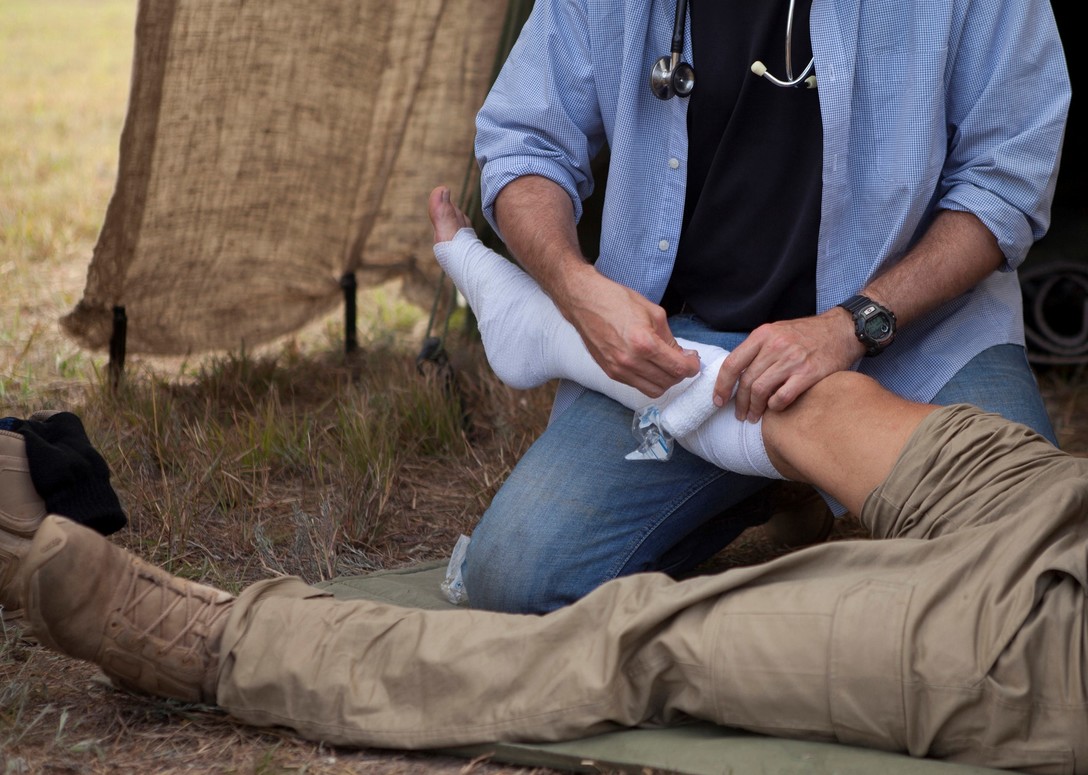
The recurring theme here is that you need to seek medical assistance as soon as you can.
If the bite was venomous, you will need anti-venom. Before Albert Calmette invented anti-venom around 1985, around 100 people per year died of snake bites in the US. Today, those few (four or five people) who do die of snake bites each year are more likely to be young, old, or unable to get anti-venom treatment in time.
Equally, you may need antibiotics, a tetanus shot, or intravenous fluids. In the case of severe blood loss, you may also need a blood transfusion.
You will be required to stay in the hospital for a period of monitorization, in particular for allergic reactions. Allergic reactions are not uncommon, which is why a trained doctor should administer the anti-venom.
Most children recover quickly from bites in as little as one to two weeks. Many adults will recover in a similar period of one to three weeks. However, as much as 25% will improve slowly over one to nine months.
Part 7:
- How to Prevent snake bites
- If walking through snake land, wear high-top boots, thick pants, and gloves to protect as much of the feet, legs, and hands as possible.
- Avoid sitting, lying down, or placing your hands and feet where snakes live
- If you do encounter a snake, back away from it slowly and avoid contact.
- If camping, avoid swamps, streams, and dense foliage where snakes are known to live.
Part 8:
- Frequently asked questions
Can I administer Benadryl?
You certainly can’t! The only proper treatment for a snake bite is anti-venom, which must be administered correctly, in a controlled environment.
How is anti-venom made?
There are notable shortages of anti-venom worldwide, in no small part due to its resource-intensive process. It was discovered over 100 years ago by injecting horses with venom until they produced antibodies. The resulting serum was then injected as anti-venom.
In modern times a similar process is followed. First, a variety of snakes are ‘milked’. The milk is freeze-dried to concentrate the venom before injecting it into animals to create antibodies. The animal blood is then purified in a centrifuge to separate the anti-venom, before being frozen and injected.
Monospecific anti-venoms treat only one type of snake bite. Polyspecific anti-venoms treat bites from various snakes.
Do you have a one-page guide to print off?
Yes! You can find that here – downloadable guide

